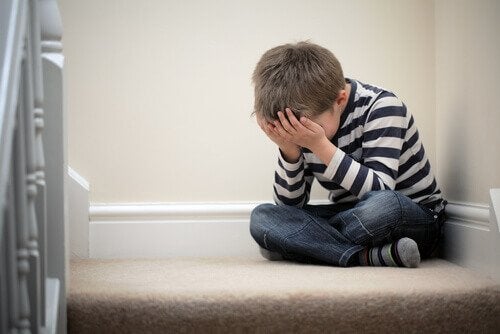Panic syndrome in children is not materially different from panic syndrome in adults. Perhaps the most differentiating element is the various interpretations of symptoms. But first, let’s see what panic syndrome is.
Panic syndrome is an anxiety disorder. Anxiety is a human emotion, very human, consists of an activation of the autonomous nervous system in the face of stimuli or situations identified as threatening, so it is adaptive because it contributes to survival by activating the body’s resources.
- Anxiety becomes a problem when it reaches a very high intensity or appears in situations where there is no real danger.
- In this case it loses its adaptive value.
- Causing discomfort and abnormal functioning of the person.
Children and adolescents, as well as adults, may have an anxiety disorder. Some events, such as the start of the school year, the birth of a sibling, the loss of a family member, or a change of household can cause the problem to appear.
Despite sharing many similarities to an adult’s anxiety, a child’s response to symptoms differs considerably. The negative consequences of childhood anxiety can affect more than adult life, as a child’s resources to cope with anxiety are not yet developed.
In particular, certain events, which can have a very strong emotional impact, can interfere with the child’s growth and maturation process, and the impact can be felt on the child’s social, school, personal, and family environment. and can lead to more serious pathologies.
Some anxiety disorders are more common in childhood than others, such as generalized anxiety, others are problems of a certain age or very specific facts, such as when the child is separated from several attachment figures.
Panic syndrome is characterized by the recurrent presence of panic attacks that last minutes or hours, these attacks consist of aversive (physiological) and cognitive symptoms that reach their highest intensity within the first ten minutes and then gradually decrease.
The most common symptoms of a panic attack are
In children the most common symptoms are palpitations, tremors, shortness of breath and dizziness (Last and Strauss, 1989). As you can see, cognitive symptoms in children are less common (fear of dying or losing control). Somatic or physiological symptoms predominate.
Childhood panic syndrome is more common in girls than in boys and its incidence is low at young ages. Adolescent incidence of 1% (Lewinsohn, Hops, Roberts, Secley and Andrews, 1993). It usually begins at the end of adolescence or around age 30.
Panic syndrome can sometimes occur with agoraphobia, which in turn is defined as the intense fear of encountering situations that are difficult to escape from or seek help if symptoms occur.
Law (1987) considers anxiety and stress to be the two most common triggers for hyperventilation, regardless of wither that it may have other reasons (illnesses, exercise, caffeine consumption, etc. )
Hyperventilation causes the child to be overloaded by metabolic needs, so ventilation becomes very high relative to the rate of carbon dioxide production, resulting in a reduction in carbon dioxide blood pressure, below normal values.
Feelings that appear at the same time as hyperventilation (sweating, tachycardia, palpitations, dizziness, vision disturbances, feeling choking, shortness of breath, cramps, etc. ) cause fear in children, so this sensation triggers the combat leak mechanism, increasing symptoms of hyperventilation and fear of sensations.
In short, the increase in symptoms and the resulting fear represent a vicious cycle that can lead to the onset of a panic attack, however, hyperventilation is not the only factor that explains the panic attack, other factors are biological predisposition and pavlovian conditioning, which explains panic attacks through association processes.
As we have seen, panic syndrome in children is very similar to what adults may feel, perhaps the most significant difference is the interpretation of symptoms, as well as the more or less large presence of physical or cognitive symptoms.

